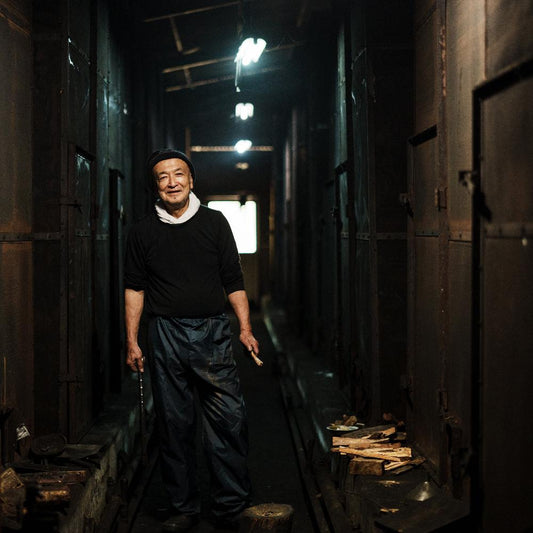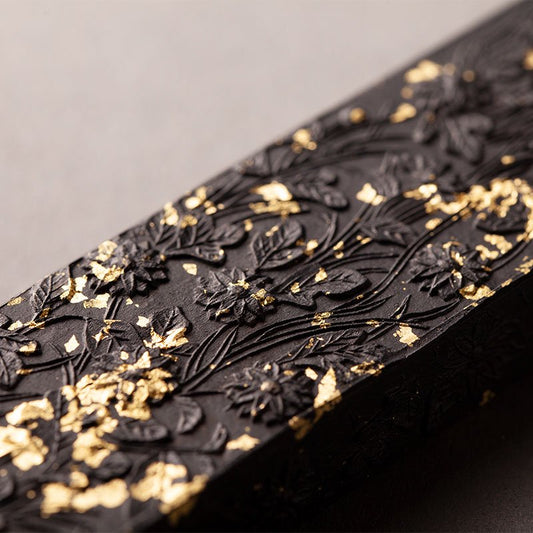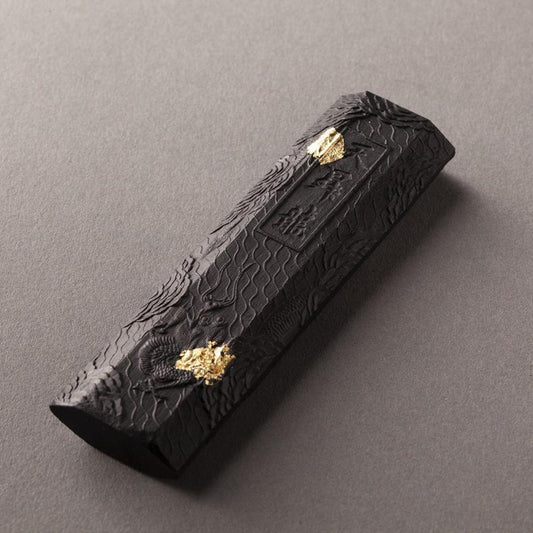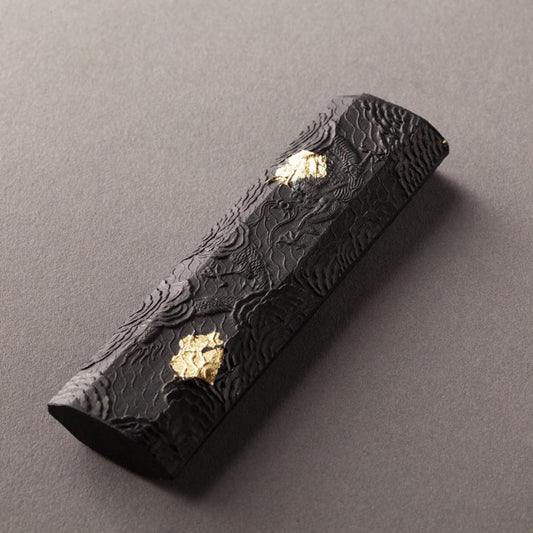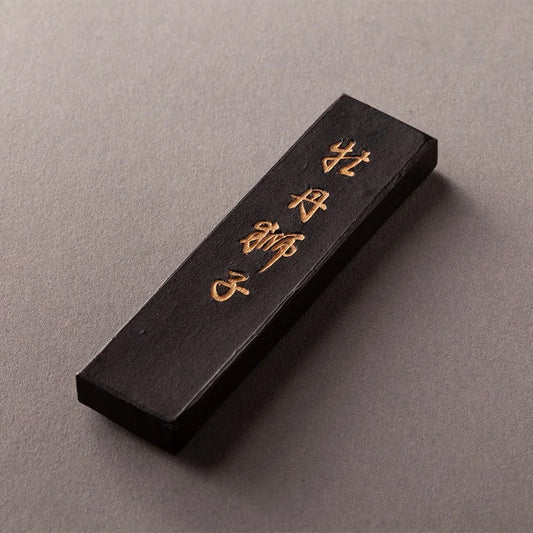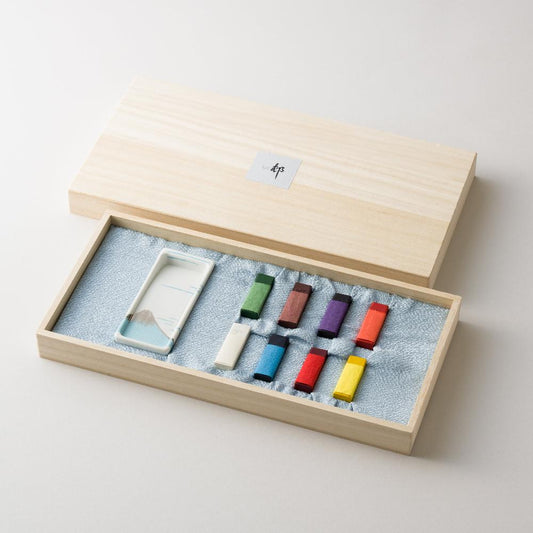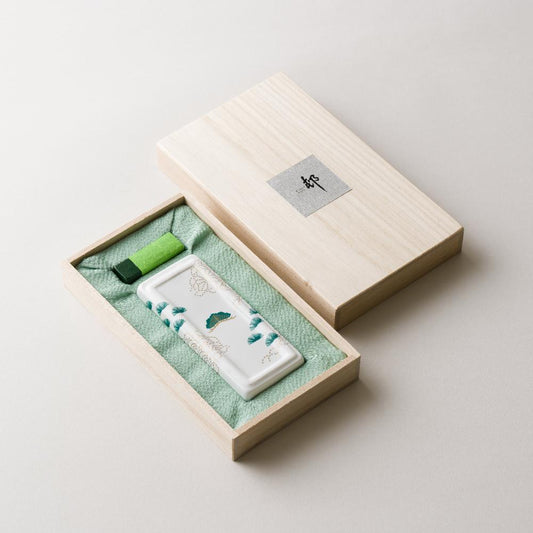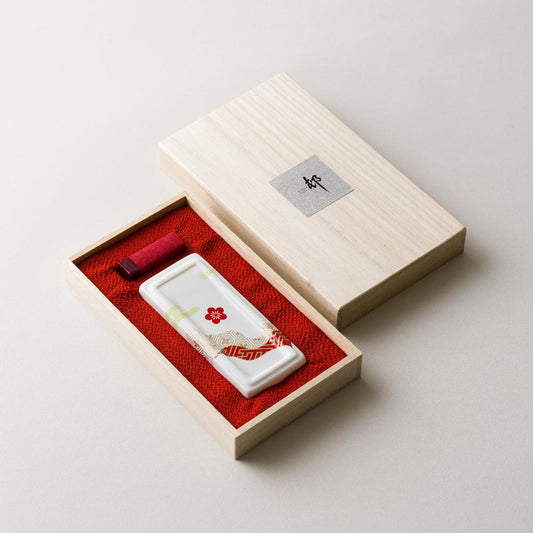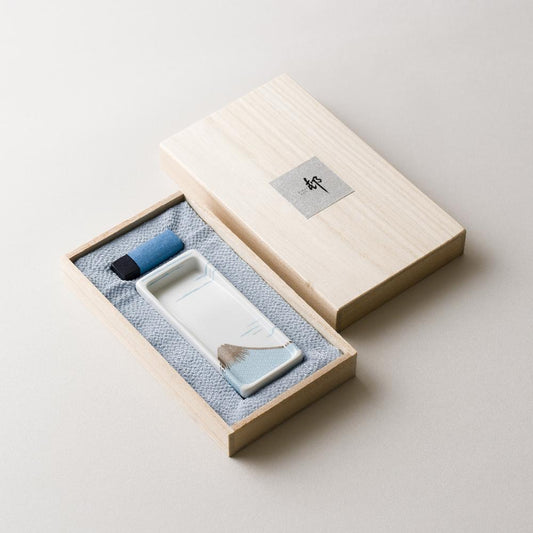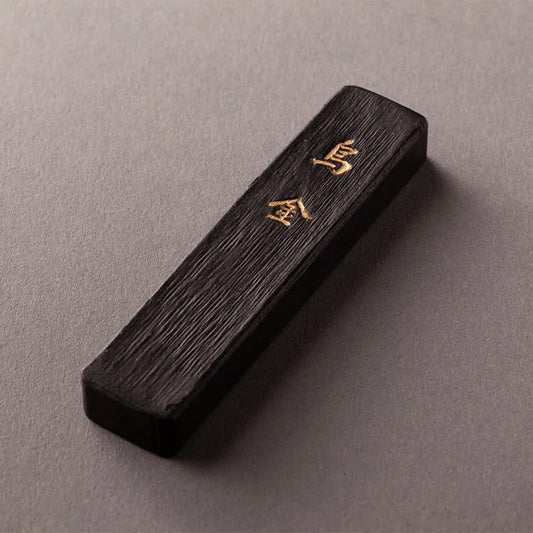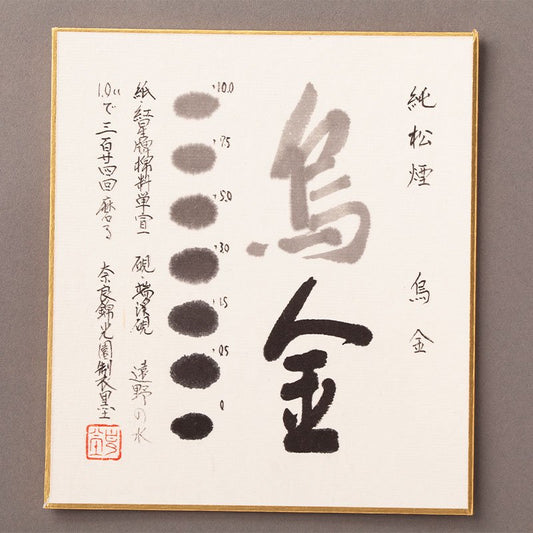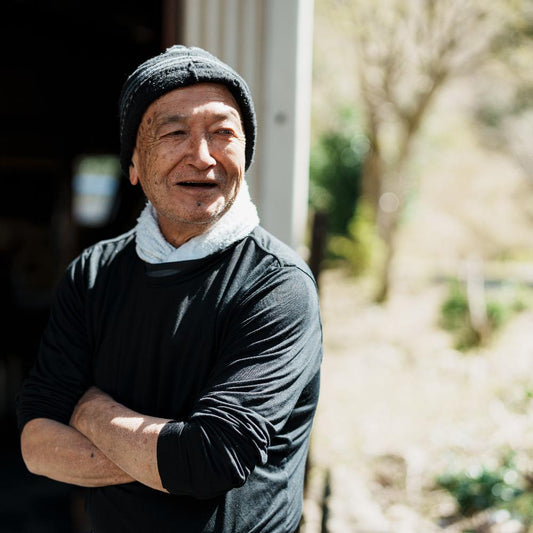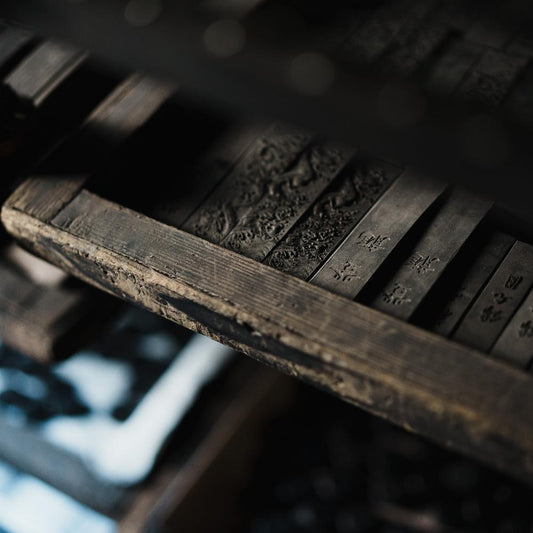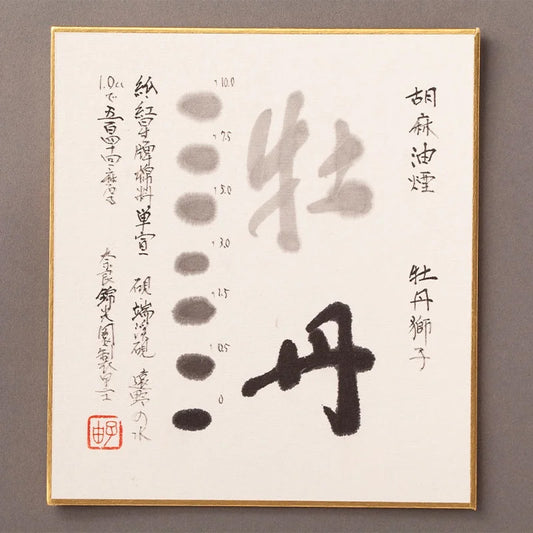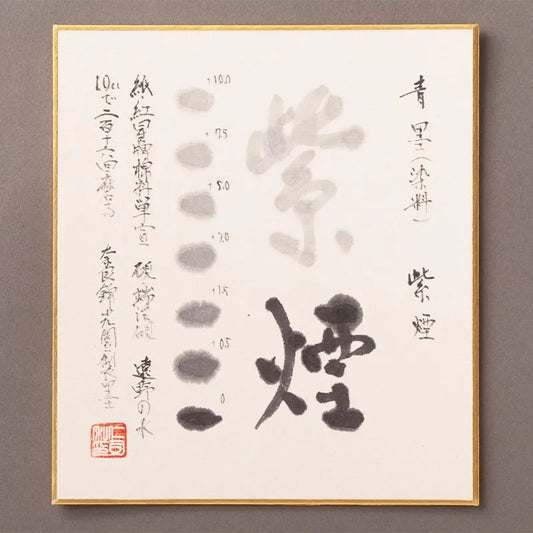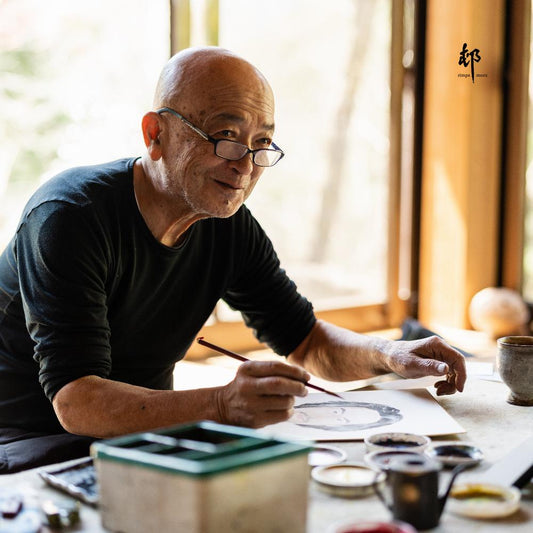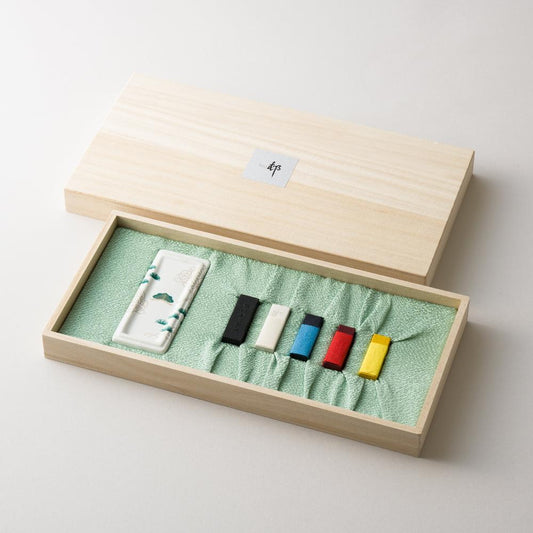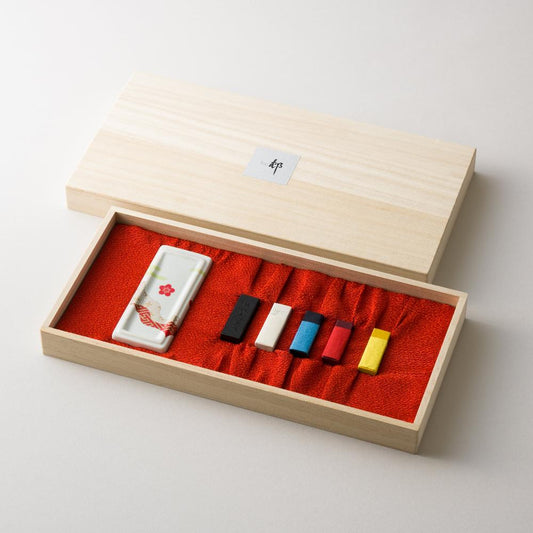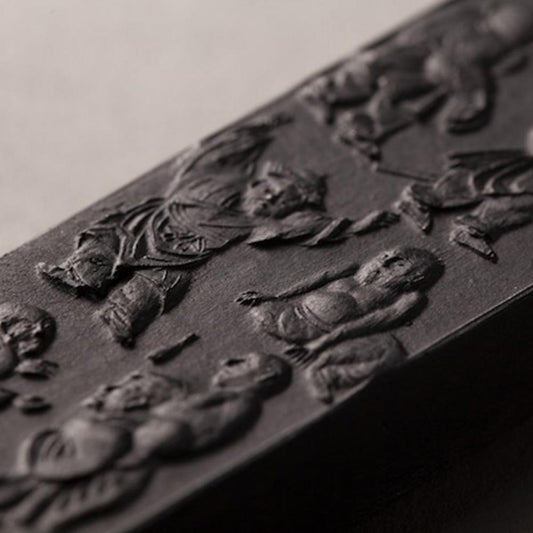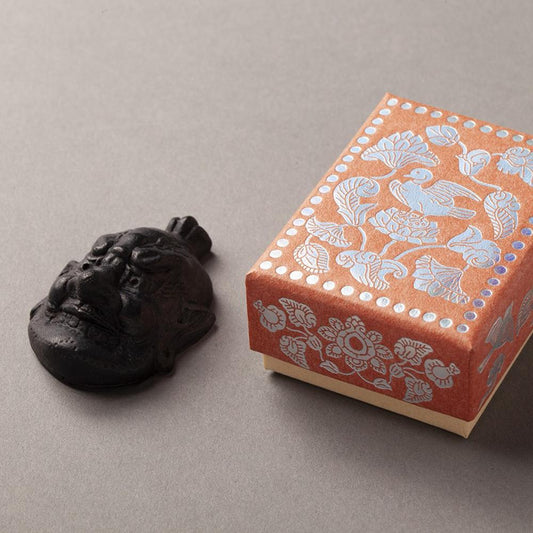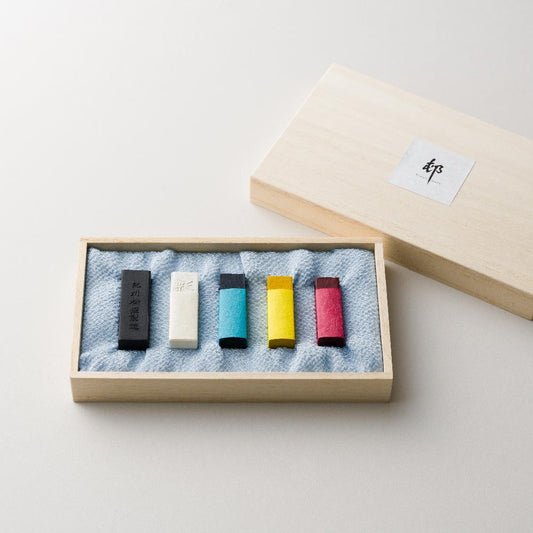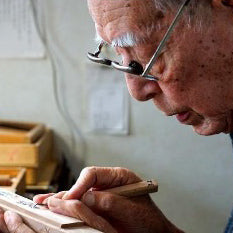
松煙煤職人 Masao Horiike
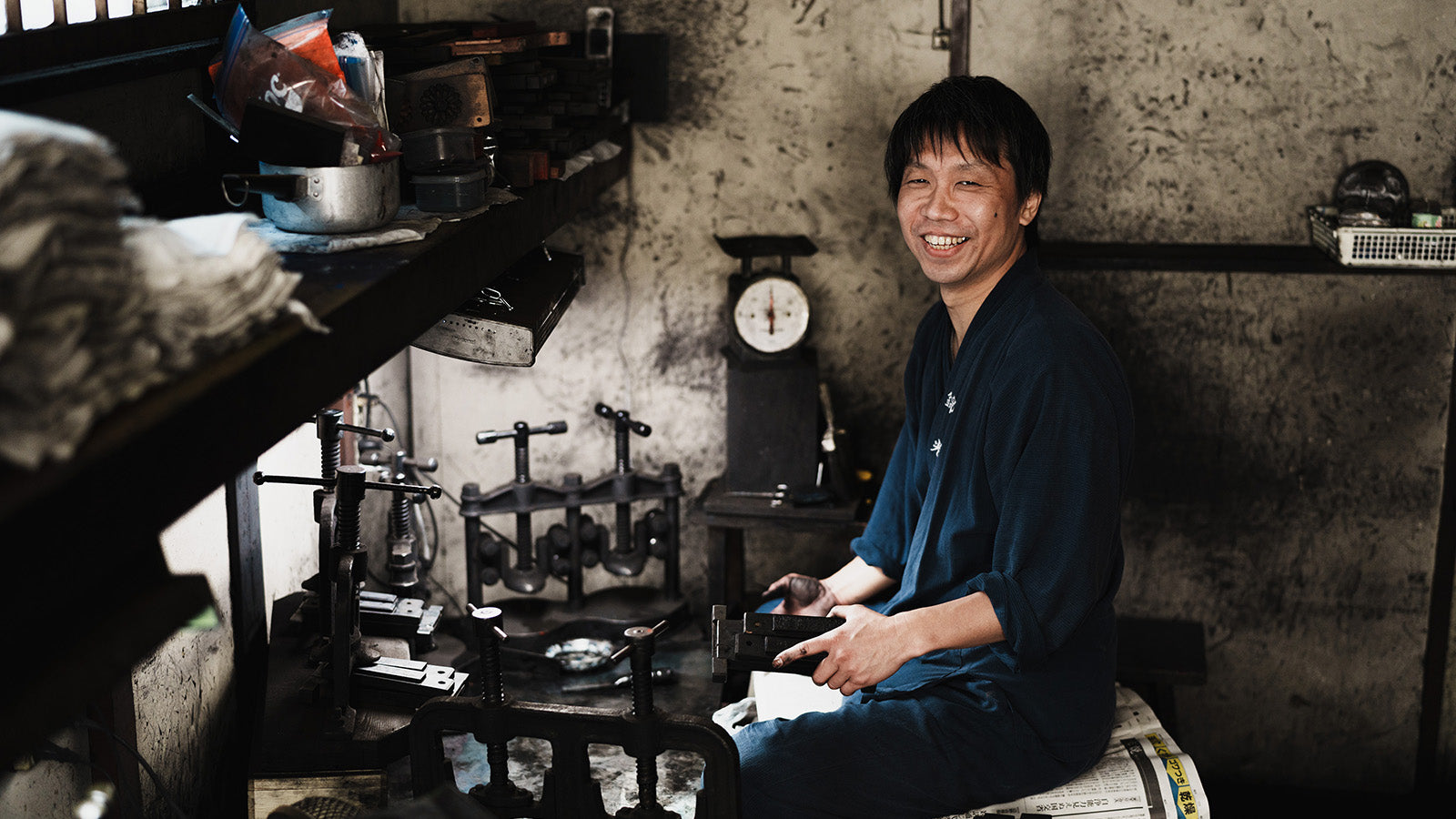
奈良墨 墨匠 Atsushi Nagano
-

Pine Soot Ink (shoen boku)
To know moreMade from the soot generated by burning pine branches or bark. Dark ink exhibits a subdued matte color, while light ink features a transparent and luminous shade providing a fine-grained three-dimensional effect. It is said that as it ages, the color shifts from black tones to blue tones.
-

Oil Soot Ink (yuen boku)
To know moreCreated from the soot produced by burning vegetable oils such as rapeseed oil. Dark ink presents a glossy and deep black color with a sense of depth. The color may vary depending on the type of vegetable oil used. Light ink, on the other hand, has a faintly brown hue, providing a fine-grained three-dimensional effect.
-

Colorful sumi inks
To know moreColorful sumi inks have emerged and gained popularity. The trailblazer behind this trend is Mr. Masao Horiike, the sole artisan in Japan still producing pine soot, the key ingredient of sumi ink. He has expanded his product line as the SAIEMBOKU series, introducing various colors, and now the color variations exceed 40.
-
Other Types
Made from burning materials such as mineral oil and carbon black. This type of ink is relatively economical and tends to darken quickly, offering a cost-effective option.
-
【KISHU】KISHU SUMI, made of precious pine soot
Prix habituel Du $50.00Prix habituelPrix unitaire / par -
【Nara】KOKI, good for calligraphy & sumie painting
Prix habituel $34.00Prix habituelPrix unitaire / par -
【Nara】TENSHORYU, good for calligraphy & sumie painting
Prix habituel $78.00Prix habituelPrix unitaire / par -
【NARA】Essence of Soot, THREE VARIETIES set
Prix habituel $137.00Prix habituelPrix unitaire / par -
【KISHU】“SAIEMBOKU”, watercolor sumi ink sticks good for calligraphy and sumie painting
Prix habituel $19.00Prix habituelPrix unitaire / par -
【KISHU & ARITA】 Arita Porcelain suzuri (OMOTE) - FUJISAN & 8 watercolor sumi ink sticks good for calligraphy and sumie painting
Prix habituel $221.00Prix habituelPrix unitaire / par -
【KISHU & ARITA】Arita Porcelain suzuri (URA) & SAIEMBOKU, watercolor sumi ink stick
Prix habituel $78.00Prix habituelPrix unitaire / par -
【KISHU】Arita Porcelain suzuri (OMOTE) & SAIEMBOKU, watercolor sumi ink stick
Prix habituel $78.00Prix habituelPrix unitaire / par -
【NARA】UKIN, a sumi ink stick ideal both for calligraphy and sumie painting
Prix habituel $54.00Prix habituelPrix unitaire / par -
【NARA】The Shokunin's Palette: THREE HUES of Nara Sumi ink
Prix habituel $104.00Prix habituelPrix unitaire / par -
【NARA】The pine-soot sumi TRILOGY
Prix habituel $260.00Prix habituelPrix unitaire / par -
【KISHU】IKIMATSU, good for calligraghy and sumie painting
Prix habituel $189.00Prix habituelPrix unitaire / par -
【NARA】Set of Three from Shaped Like Japanese Sweets in a paulownia wood box.
Prix habituel $124.00Prix habituelPrix unitaire / par -
【NARA】BOTANJISHI, a sumi ink stick ideal both for calligraphy and sumie painting
Prix habituel $49.00Prix habituelPrix unitaire / par -
【NARA】SHIEN, a sumi ink stick ideal both for calligraphy and sumie painting
Prix habituel $20.00Prix habituelPrix unitaire / par -
【KiISHU】5 BLUE SHADES from SAIEMBOKU Series
Prix habituel $111.00Prix habituelPrix unitaire / par -
【KISHU】5 BLACK from SAIEMBOKU Series
Prix habituel $111.00Prix habituelPrix unitaire / par -
【KISHU & ARITA】Arita Porcelain suzuri (URA) comes with 1 KISHU SUMI & 4 SAIEMBOKU
Prix habituel $195.00Prix habituelPrix unitaire / par -
【KISHU】GOLD & SILVER sumi
Prix habituel Du $65.00Prix habituelPrix unitaire / par -
【Nara】KYUSHIEN(Garden of Nine children), good for calligraphy & sumie painting
Prix habituel $156.00Prix habituelPrix unitaire / par -
【Nara Sumi Ink】Kaori Sumi "ASUKA" (Kaori means scent in Japanese)
Prix habituel Du $34.00Prix habituelPrix unitaire / par -
【KISHU】“SAIEMBOKU” & precious shoenboku, KISHU SUMI
Prix habituel $117.00Prix habituelPrix unitaire / par -
【Nara】OHAJIKI Sumi
Prix habituel $137.00Prix habituelPrix unitaire / par





